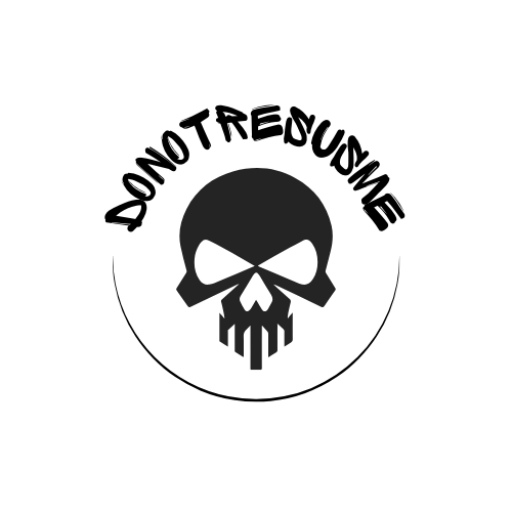Did you know our brains focus more on negative experiences than positive ones? This is called the negativity bias. It’s a key way our minds handle emotional memories. We remember bad events, like traumas or insults, much clearer than happy times. This bias has roots in evolution, showing why we tend to remember the negative more.
In this article, we’ll dive into the science of the negativity bias. We’ll look at cognitive biases, survival instincts, and brain processes that make us remember the bad. By the end, you’ll understand why we hold onto negative memories. You’ll also learn how to balance this natural tendency.
The Negativity Bias: Our Tendency to Focus on the Bad
Have you ever felt a single negative comment from a coworker could ruin your day? Even with many positive interactions, this happens often. This is the negativity bias at work. It makes us remember and focus more on the negative than the positive.
This bias helps explain why bad first impressions are hard to shake off. It also explains why past traumas can stay with us for so long.
What is the Negativity Bias?
The negativity bias means we easily notice and remember negative events. We tend to focus more on the bad things in any situation. This makes negative experiences seem bigger than the positive ones.
Examples of how Negativity Bias Affects Us
Picture having a good day at work, but a single comment from a colleague ruins it. You start to think about their words all day. When someone asks about your day, you say it was “terrible,” even though most of it was good.
This focus on negative experiences comes from the negativity bias. It makes us give more weight to the bad things. This affects our memories and how we make decisions.
“The negativity bias leads us to pay far more attention to the bad things that happen, causing them to loom larger in our minds and have a disproportionate impact on our memories and decision-making.”
Evolutionary Origins of the Negativity Bias
The evolutionary origin of negativity bias goes back to our ancestors’ need to survive. In the past, the world was more dangerous. Our brains learned to pay more attention to danger signals. This helped our ancestors quickly spot and react to threats.
Picture our ancestors searching for food. Those who noticed even small signs of danger, like a rustle in the bushes, were more likely to survive. They passed on their genes. But those who ignored these signs were more at risk and could have been in danger.
The Adaptive Value of Negative Bias
Over time, our brains learned to focus more on the negative. This helped our ancestors avoid danger, which was key to survival. This trait has helped us survive and succeed, even with many threats and challenges.
“The negativity bias is a testament to the power of our evolutionary past, where the ability to quickly recognize and respond to danger was essential for survival.”
Knowing how the negativity bias evolved helps us see its value. It shows how our minds have adapted to stay resilient and adaptable.
Negativity Bias in Infancy and Childhood
Our tendency to focus on the negative doesn’t just start later in life. It has roots early in our development. Research shows that negativity bias begins in infancy. Babies pay more attention to positive expressions and voices.
But around the one-year mark, this starts to change. Brain studies show infants react more to negative things. This means the brain’s negative bias grows in the second half of the first year. Some research even points to 3-month-olds showing negative attention when judging others.
So, from a young age, we’re wired to notice the bad more than the good. This development of negative bias helped our ancestors stay safe. But today, it can sometimes hurt us more than help.
Exploring the negativity bias shows how deep it goes back to our early days. It helps us understand our thoughts, actions, and choices. This topic keeps fascinating researchers and readers alike.
The Neuroscience Behind the Negativity Effect
Our brains seem to focus more on the negative than the positive. This is backed by neuroscientific findings on the neuroscience of negativity bias.
Research using event-related brain potentials (ERPs) shows negative stimuli get a bigger brain response. Negative images, in particular, strongly activate the cerebral cortex. This area is key for processing information. This neural processing of negative information makes us more affected by bad news and experiences.
The brain areas linked to negative stimuli include the amygdala and the anterior cingulate cortex. These areas are key for emotions and making decisions. When we face negative events, these areas get very active. This leads to responses that help us deal with threats.
“Because negative information causes a surge in activity in a critical information processing area of the brain, our behaviors and attitudes tend to be shaped more powerfully by bad news, experiences, and information.”
This focus on negative stimuli helped us survive in the past by quickly spotting dangers. But today, it can affect how we see things and make decisions. Knowing how our brains work can help us manage this negativity bias better.
why we’re wired to remember the negative more
We tend to remember negative experiences more than positive ones. This is called the negativity bias. It deeply affects how we remember things. Studies show we recall negative events better and tend to remember negative info more.
Our brains do this for a reason. Back in the day, remembering threats was key to survival. Our brains learned to focus on the negative to keep us safe. This helped our ancestors avoid danger. Now, we still focus on past failures and criticism more than our wins.
The Negativity Bias and Memory
The negativity bias affects our memory in many ways. We:
- Remember negative experiences more clearly than positive ones
- Use more brain power to process negative info
- Keep negative memories longer
- Think more about past failures than successes
This bias can impact our feelings, relationships, and how we make decisions. Knowing why we do this can help us balance our thoughts and feelings.
“The human brain is biased towards the negative. We remember negative events more vividly than positive ones.”
Impacts of the Negativity Bias

The negativity bias deeply affects our relationships and how we make decisions. It makes us focus more on the bad than the good. This can make us expect the worst from others, leading to tense interactions and conflicts.
It can also make it hard to keep relationships strong. When we always look for the negative, we might start to argue more and feel resentful. This can stop us from building healthy connections.
When making decisions, we often let the fear of what might go wrong guide us. This can lead us to choose the safe option, even if it’s not what we really want. It makes us miss out on opportunities and goals we truly desire.
Relationships and the Negativity Bias
- The negativity bias makes us expect the worst from others, leading to a defensive and mistrustful approach in relationships.
- This mindset can fuel arguments, breed resentment, and make it difficult to cultivate and sustain healthy connections.
- The tendency to focus on negative aspects of our partners or interactions can overshadow the positive, creating an imbalanced and often unsatisfying dynamic.
Decision-Making and the Negativity Bias
- The overemphasis on negative information can cause us to place greater weight on potential losses than possible gains.
- The fear of what could go wrong often outweighs the desire for positive outcomes, leading to more cautious, risk-averse choices.
- This bias can influence the decisions we make, potentially hindering our ability to seize opportunities and achieve our goals.
Understanding the impact of the negativity bias is key to improving our personal and professional lives. By recognizing this tendency and working to balance it, we can have better relationships and make choices that reflect our true goals.
Strategies to Overcome the Negativity Bias
We often focus on the negative, a habit known as the negativity bias. But, we can change this and think more positively. Let’s look at ways to manage negative thinking and increase positivity.
Mindful Attention and Cognitive Reframing
First, we need to notice our thoughts. When we think too much about the negative, we can use mindful attention. This means stopping to watch our thoughts and choosing to see things in a better way. Cognitive reframing helps us see problems as chances to grow, not just threats.
Gratitude and Celebration
Thinking about what we’re thankful for and celebrating small wins can fight the negativity bias. Writing down what we appreciate and recognizing our successes, big or small, trains our brains to look for the good.
Physical and Environmental Strategies
Changing how we think can also come from our surroundings and actions. Doing physical activities or finding distractions can stop negative thoughts. Being in places that are calm and less stressful can also help us avoid negative thoughts.
With regular practice, these methods can make us stronger against hard times. They help us see life more positively and optimistically.
“The greatest weapon against stress is our ability to choose one thought over another.” – William James
The Adaptive Value of the Negativity Bias

The negativity bias affects our relationships, decisions, and mental health. Yet, it also had key roles in our evolution. In the past, focusing on threats helped our ancestors survive. Those who quickly noticed dangers were more likely to avoid harm and have more offspring. This bias helped our brains keep us safe and ensured our survival.
Being alert to threats was crucial for our ancestors. They had to be quick to react to dangers to avoid predators and harmful situations. This sensitivity was key for our survival and passing on our genes.
- The adaptive benefits of negativity bias allowed our ancestors to quickly identify and respond to potential dangers.
- The evolutionary value of negative bias helped ensure the survival and continuation of the human species.
- The survival advantages of attending to threats were critical in our ancestral past, even if they can sometimes be problematic in the present day.
“The negativity bias, though sometimes maladaptive in modern life, developed as a way for the brain to keep us safe and ensure our species’ continuation.”
The negativity bias has downsides today, but it’s rooted in our evolution. It played a big role in our ancestors’ survival. Understanding its adaptive value helps us see how it shaped our thinking and behavior over time.
Conclusion
We’ve looked into how our brains tend to focus more on the bad things in life. This habit helped our ancestors stay safe for a long time. But today, it can hurt our relationships and how we make decisions.
Understanding why we do this is key to changing it. By paying more attention to the good things, celebrating small wins, and fighting negative thoughts, we can see things more evenly. Our brains can change, and with the right methods, we can find the good even when things are tough.
Let’s use what we know about this bias to our benefit. This way, we can live a life we really want, not just follow our old instincts. The negativity bias is tricky, but we can use it wisely.

